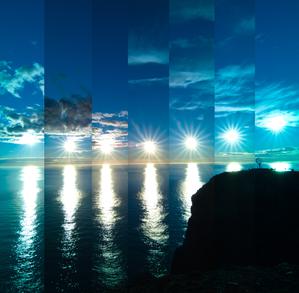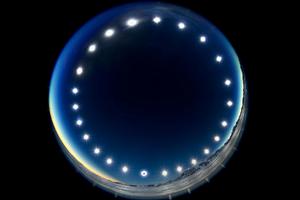Glossarbegriffe: Polarkreis
Description: Die Polarkreise sind besondere Breitenkreise auf der Erde. Der Polarkreis bei 66°33′48,8″ N wird als nördlicher Polarkreis und der Polarkreis bei 66°33′48,8″ S als südlicher Polarkreis bezeichnet. Aufgrund der geneigten Rotationsachse der Erde gibt es in Regionen nördlich des nördlichen Polarkreises und südlich des südlichen Polarkreise im Winter "Polarnächte" und im Sommer "Polartage". Während einer Polarnacht steht die Sonne mehr als 24 Stunden lang unter dem Horizont. Diese Zeit der Dunkelheit kann mehrere Monate dauern. Während eines Polartages steht die Sonne mehr als 24 Stunden lang über dem Horizont: Dann kann es mehrere Monate lang taghell sein. Polartage und -nächte sind in der Nähe der Pole am längsten. Polarnächte finden vor und nach der Wintersonnenwende der jeweiligen Polarregion statt, Polartage vor und nach der Sommersonnenwende.
Zugehörige Glossarbegriffe:
See this term in other languages
Term and definition status: The original definition of this term in English have been approved by a research astronomer and a teacher The translation of this term and its definition is still awaiting approval
The OAE Multilingual Glossary is a project of the IAU Office of Astronomy for Education (OAE) in collaboration with the IAU Office of Astronomy Outreach (OAO). The terms and definitions were chosen, written and reviewed by a collective effort from the OAE, the OAE Centers and Nodes, the OAE National Astronomy Education Coordinators (NAECs) and other volunteers. You can find a full list of credits here. All glossary terms and their definitions are released under a Creative Commons CC BY-4.0 license and should be credited to "IAU OAE".
Zugehörige Medien
When the Sun Bounces
Bildnachweis: Milos Obert/IAU OAE (CC BY 4.0)
License: CC-BY-4.0 Creative Commons Namensnennung 4.0 International (CC BY 4.0) icons
The Eclipse Clock-Eclipse on a Polar Day
Bildnachweis: Stephanie Ziyi Ye/IAU OAE (CC BY 4.0)
License: CC-BY-4.0 Creative Commons Namensnennung 4.0 International (CC BY 4.0) icons










